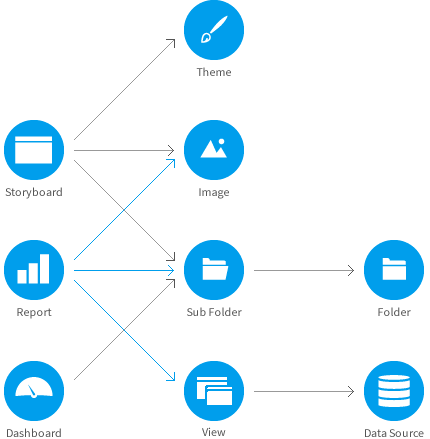Page History
...
Yellowfin's content dependency structure is illustrated below.
However, transferring dependencies is fairly easy with Yellowfin 7.3+, where you don't need to worry about mapping each content with your data; Yellowfin will detect if the correct items are already present in the destination environment. If they aren't, you will receive warnings of the missing data and be asked to assign replacements.
How do I transfer content from one Yellowfin instance into another?
You can do this by exporting your content into an external file (such as a yfx file) and then importing that yfx file into the destination system.
Why do I need to export content?
If you have a multiple environment infrastructure, this functionality allows you to transfer content from one instance to another (such as QA to production).
Who can export or import content? Can any user do it?
Only Yellowfin users and administrators who have special rights and permissions to export and import content, can carry out these tasks.
Export Process
| Styleclass | ||
|---|---|---|
| ||
...
Unlike the previous versions, Yellowfin 7.3+ tracks and compares each file you transfer through its universally unique identifiers (or UUID), to restrict multiple copies of the same reports and data from existing in an environment. Therefore, even if the same files have different names, Yellowfin will be able to detect that they’re a match and warn you from copying them, saving you from an overload of redundant data from existing in your system.
...

